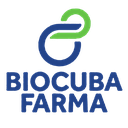Executive Secretary

VIII International Symposium on Chemistry and Pharmaceutical Sciences
SIIQ
XIII Conference "Chemical Engineering: Development, potentials and challenges"
Abstract
Aluminum phosphate is a widely used adjuvant in preventive vaccines. Although it is commercially available, most producers prefer to use fresh synthesized adjuvant, which has better adsorptive properties and provides higher consistency. In the technological transfer of the Quimi-Vio vaccine, a scale up is projected to reach 50 L of vaccine. The new scale will require an amount of AlPO4 higher than that obtained with the established methodology (3.5 times), which indicated the need to scale the synthesis to obtain the necessary gel. Materials and methods: The thumb method and Reynolds number criteria were selected, allowing the calculation of the agitation speed in the new conditions. A 35L Chemap reactor with baffles and 3 impellers with straight blades at 90° was used. The batches were chemically-physically characterized, as well as their capacity to adsorb the seven components of the Quimi-Vio vaccine. The load distribution and moist heat sterilization conditions were designed and the lethality time was determined. Results: The batches maintain an amorphous structure and comply with the quality criteria of the product in the previous scale. The Z potential and particle size show an heterogeneous product with a polydispression index of 57% and a point of zero charge coincides with that reported in the literature. The adsorption capacity was greater than 80% for the vaccine mixture. The design of the sterilization conditions allows reaching lethality values greater than 24 while maintaining the adsorptive capacities of the adjuvant.
Resumen
El fosfato de aluminio es un adyuvante ampliamente usado en vacunas preventivas. Disponible en forma comercial,la mayoría de los productores prefieren utilizar el adyuvante sintetizado fresco, el cual tiene mejores propiedades adsortivas y brinda mayor consistencia productiva.Enla transferencia tecnológica de la vacuna Quimi-Vio, se proyecta alcanzar de 50 L de vacuna. La nueva escala necesitará una cantidad de AlPO4 superior a la obtenida con la metodología establecida (3,5 veces), lo indica la necesidad del escalado de la síntesis para obtener el volumen necesario. Materiales y métodos: Se seleccionó el método del pulgar y criterio del número de Reynolds, permitiendo calcular la velocidad de agitación en la nuevas condicines. Se empleó un reactor Chemap de 35L, con bafles y 3 impelentes de paletas rectas a 90°. Los lotes fueron caracterizados química-fisicamente, así como su capacidad para adsorber las siete ifas de la vacuna Quimi-Vio. Se diseñó la distribución de la carga y codiciones de esterilización por calor húmedo y se determinó el tiempo de letalidad. Resultados: Los lotes obtenidos mantienen una estructura amorfa y cuplen con los criterios de calidad delproducto en la escala anterior. Los parámetros de potencial Z y tamaño de partícula muestran un producto heterogéneo con índice de polidispresión de 57% y el punto de carga cero coincide con el reportado en la literatura. Presenta una capacidad de adsorción superior al 80% para la mezcla de ifas. El diseño de la esterilización permite alcanzar valores de letalidad superior a 24 manteniendo las capacidades adsortivas del adyuvante.
About The Speaker

Yohanna Serrano

Discussion




